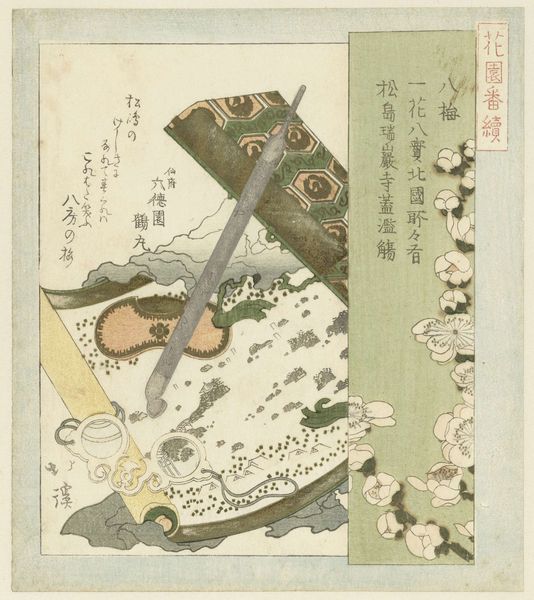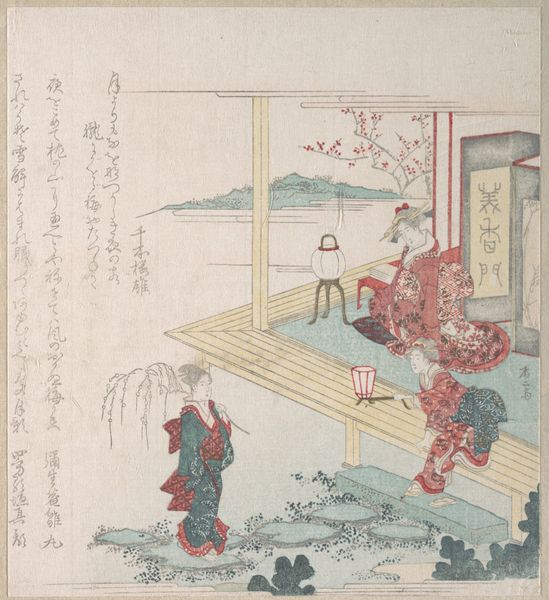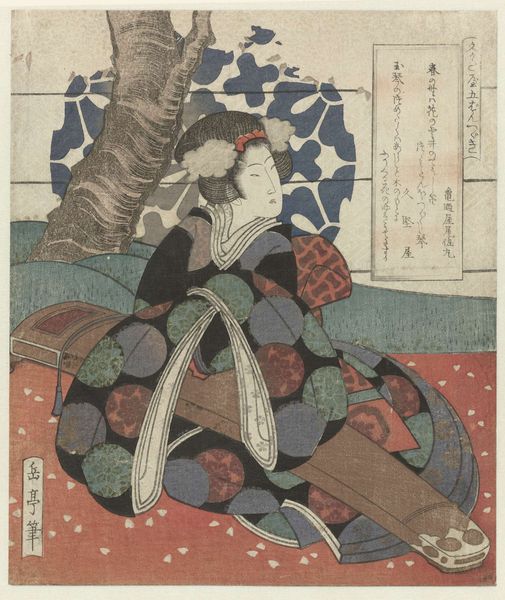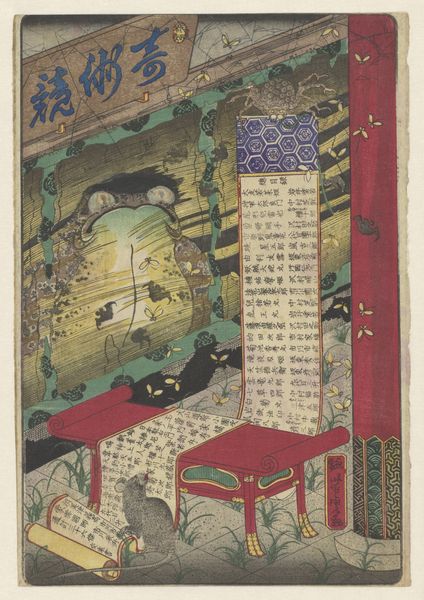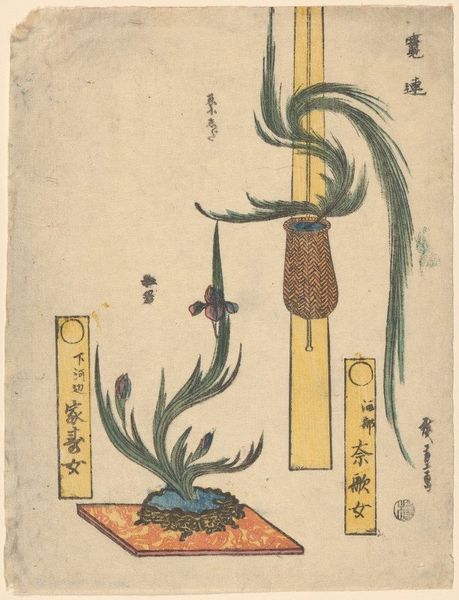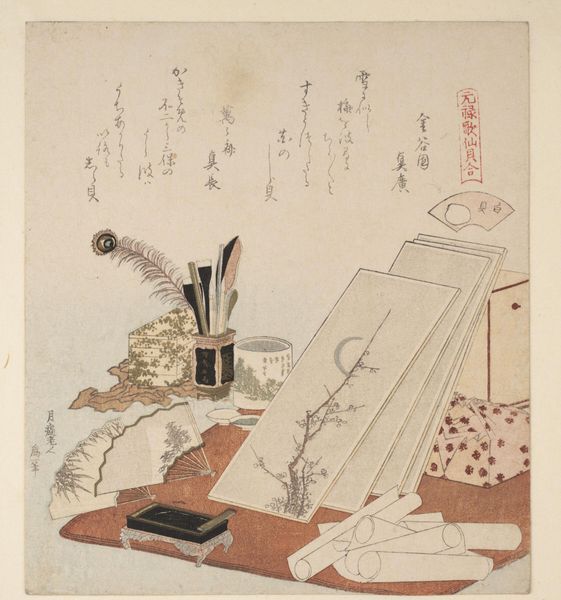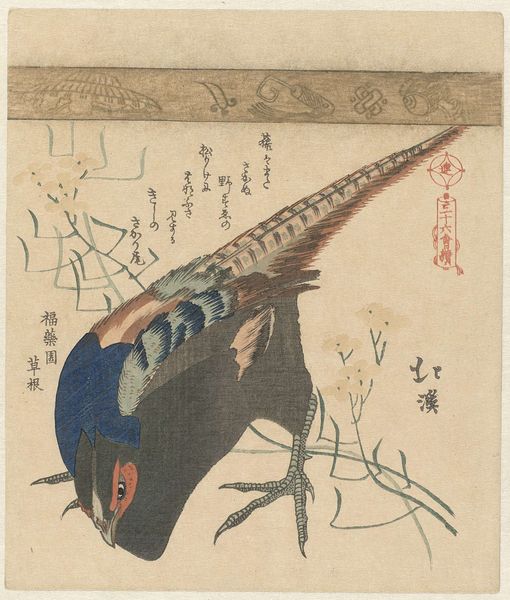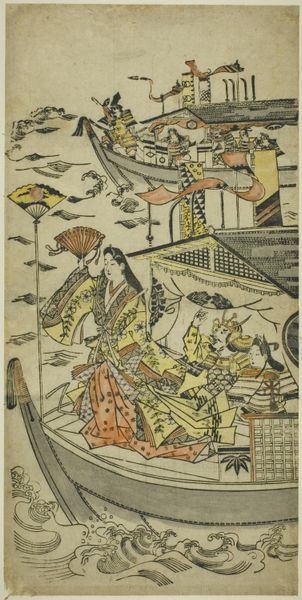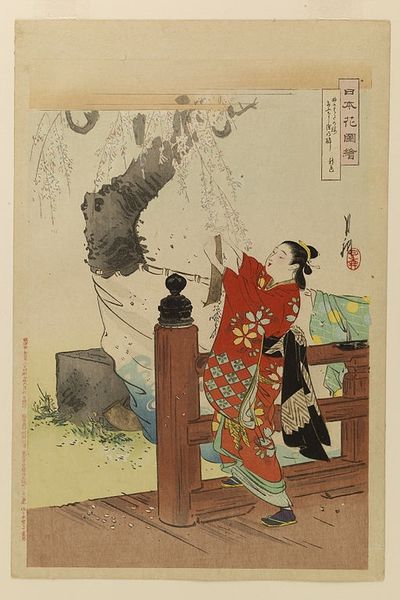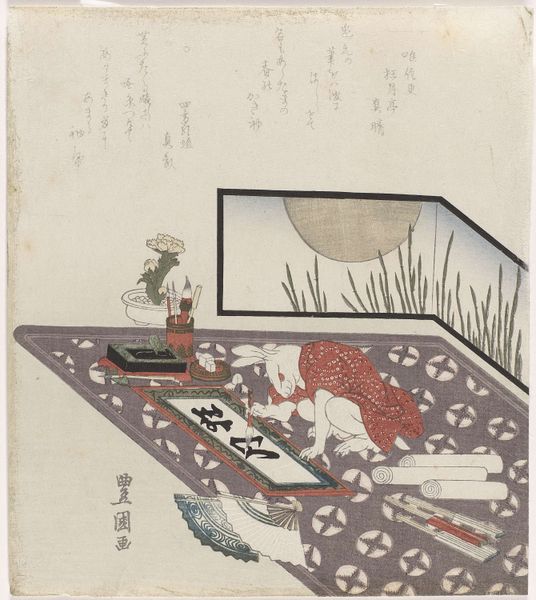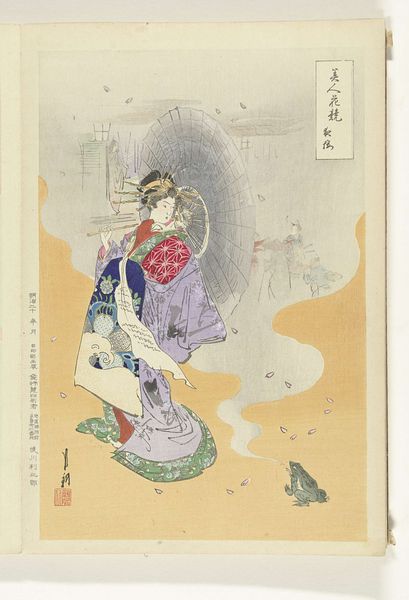
Dimensions: height 369 mm, width 245 mm
Copyright: Rijks Museum: Open Domain
Editor: So, this woodblock print, “Suijin Shrine and Sumida River” by Kobayashi Kiyochika, made in 1884, offers quite a juxtaposition. Inside is this peaceful, almost still-life setup, while outside there is a brewing storm! It is striking how the artist uses the interior setting as a lens to view this urban landscape in the rain. How do you interpret this contrasting perspective? Curator: It's interesting you mention the idea of the ‘lens’. Ukiyo-e prints, particularly during the Meiji era when this was made, provide critical insight into how Japan was rapidly Westernizing and modernizing. Look at how Kiyochika incorporates Western artistic styles such as the emphasis on light and shadow with distinctly Japanese traditions like the landscape format. What do you think that reflects about society at the time? Editor: That's a great point about the blend of Western and Japanese styles! Maybe the contrast is deliberate, mirroring the cultural shifts happening as Japan opened up to the world. The stormy scene might represent the anxieties tied to such radical changes, with the still life inside representing enduring Japanese artistic traditions? Curator: Exactly. Kiyochika was often called the "last ukiyo-e artist" precisely because he straddled these two worlds. These prints became a medium through which Japan negotiated its identity on a global stage. Consider how these prints were consumed; they weren't just art objects, but commodities distributed and displayed both domestically and internationally. Editor: I hadn't considered that element of distribution and display – it really reframes the context of the piece. Seeing it as a commodity made for local and international markets gives me a different appreciation for the artist's choices. Curator: Precisely! The consumption of art tells as much of a story as its production, illuminating the era's political, social, and economic complexities. Editor: I'm definitely going to be looking at these prints differently now, appreciating them as documents of cultural negotiation as much as artworks. Thanks for your insights!
Comments
No comments
Be the first to comment and join the conversation on the ultimate creative platform.

